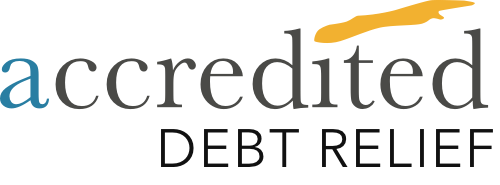How to Get a Personal Loan
Personal loans allow you to finance big-ticket items or emergency expenses that you might not otherwise be able to afford. Securing a personal loan may require some financial savvy on your part, though. Read on to understand your personal loan options and learn how to get a personal loan.
What is a personal loan?
Personal loans are funds available to individuals that you must repay with interest over an agreed-upon period. Loan providers will consider your ability to repay the debt when determining your eligibility and the loan terms. Unlike a mortgage or auto loan, you can take out a personal loan for many different purposes, including:
- Emergencies
- Student loans
- Weddings
- Home improvements
- Debt consolidation
- Large purchases
Most lenders require monthly repayments and loan terms of six months to a few years. The repayment terms will vary depending on the lender, your ability to repay the loan and the type of loan you take out.
How to get a personal loan
There are plenty of ways to get a personal loan, but first decide if you really need one. While a personal loan may help relieve some financial stress in the short term, that stress could compound later when you must make regular payments.
Before applying for a personal loan, you should consider other options or ways to borrow money, such as a credit card with 0% APR (annual percentage rate) or a personal line of credit. These options tend to be more flexible, especially if you're unsure how much money you need. If taking out a loan means your financial health will be harmed in the future, you shouldn't do it.
If you are considering taking out a personal loan, various financial institutions offer them, such as:
- Traditional banks
- Credit unions
- Online loan providers
- Peer-to-peer lenders
Different types of lenders may have different limits and conditions for borrowing, so shop around to find one that's a good fit for you. Once you know where to apply for your loan, follow these steps.
Check your credit score
The lender will check your credit score before issuing you a loan, so you’ll need to know your creditworthiness. You can get your most recent credit report from the three major credit reporting agencies — Equifax, Experian and Transunion. If your credit isn’t as good as you’d like, you may want to explore ways to improve your credit score before applying for a loan.
After you apply for the loan, the lender will make a hard credit inquiry, which may negatively affect your credit score. Look through your credit report and fix any listed mistakes affecting your score before speaking with a lender.
Determine how much you can afford to borrow
Depending on your repayment period, you must determine the maximum amount of monthly payments you can afford to take on. Only take out a loan amount you’re sure you can repay, as defaulting on your loan will damage your credit and could put your personal assets on the line in some cases.
To determine how much debt you can take on, use online calculators that will factor in the terms of your loan and find your monthly payments. You should find an amount you’re comfortable with so you don’t overextend yourself financially.
Find reputable personal loan lenders
You’ll need to do some research to find reputable personal loan lenders. You could always borrow from a traditional financial institution, such as a bank or credit union, but it’s possible you’ll find a better deal from online lenders. Some lenders will have a minimum credit score requirement, so consider your credit score and search for the best options available. Also, ask for recommendations from friends and family members who have taken out loans and had positive experiences.
Get prequalified
If you’re not sure a lender will approve your loan, getting prequalified is one option you can take. Finishing the prequalification process doesn’t guarantee you’ll get approved for a loan, but it will reduce your chances of rejection and show confidence in your application.
To get prequalified, you should find a lender you might be eligible to receive a loan from. To apply for prequalification, you must provide your name, address, income and how much you want to borrow. If you apply online to get prequalified, you can get your results in minutes.
Prequalifying for a loan will require a soft credit inquiry, which will give your lender an idea of your creditworthiness without needing a hard credit inquiry. Remember that if you’re preapproved, the lender will still need to make a hard credit inquiry when you officially apply.
Study the repayment terms and other fine print
Before agreeing to anything, understand the repayment terms and the fine print. Once you sign a contract, you’re bound to the terms. Make sure everything in the contract is to your satisfaction, including:
- Annual percentage rate (APR)
- Fixed or variable interest rate
- Secured or unsecured loan
- Origination fees
- Prepayment penalties
- Loan amount
- Repayment terms
- Loan term
Choose a lender and submit a personal loan application
Once you’ve found a reputable lender and are happy with the terms of your loan, you can apply. To do this, you’ll need to provide some documents, which may include:
- Loan application
- Proof of identity
- Proof of address
- Proof of income
- Social Security number
After applying, wait for the result. If approved, you could receive funds within as quickly as one day. Generally, funding takes place within five to seven business days. You should expect to start making monthly payments on your loan around 30 days after you receive the funds.
The pros and cons of personal loans
A personal loan has several advantages and disadvantages, depending on how you use it. Personal loans are flexible, and you can use them for almost anything. They can help you build credit if you make on-time payments, and unsecured loans will not require any collateral. If you take out a personal loan to start a business or make home improvements to increase the value of your house, it can improve your finances in the future. Generally, it’s not a good idea to use a personal loan to purchase something that could be put off, such as a vacation or jewelry.
On the other end of the spectrum, you must pay back the amount of your loan with interest. If you can’t make the agreed-upon payments, your credit score will be negatively affected, and the lender could repossess your property if you’ve taken out a secured loan. Also, if your loan term extends for a long period, you’ll be making payments to your lender for a long time, which may negatively affect your financial future.
Tips for getting a personal loan
Personal loans can be excellent tools that set you up for future financial success, but you shouldn’t rush into getting one. Consider these tips before you apply for a loan.
Borrow only what you need
Before taking out a loan, make sure you only borrow the amount you need. Taking out extra money might be great in the short term, but when you factor in the amount of interest, you’ll pay a lot more over the long term. Budget ahead of time and ensure that the money you take out will help instead of hurt you.
Understand debt-to-income ratio
A debt-to-income (DTI) ratio is one of the tools that lenders will use to assess your creditworthiness along with your credit score. To find your DTI ratio, divide your monthly debt payments by your gross monthly income. From the lender’s perspective, the lower your DTI ratio, the more likely you are to repay the loan.
Your gross monthly income is what you earn each month before taxes. Once you have this number, you need to determine your monthly debt. You’ll need to take all of your monthly payments into account, including:
- Rent or mortgage payments
- Credit card payments
- Student loans
- Real estate taxes
- Car payments
- Student loan payments
- Child support payments
- Alimony payments
- Other personal loans
After you have a number for your monthly debt payments, you can plug it into the equation and find your DTI ratio.
The Consumer Financial Protection Bureau (CFPB) indicates that a good DTI ratio for homeowners is 36% or less, with your mortgage accounting for 28% to 35%. For renters, a good DTI ratio is 15% to 20%, with your rent included in the percentage. The CFPB also notes that some lenders will allow borrowers to have a DTI ratio of 43% or higher, but the terms and availability will be less favorable.
Check for prepayment penalties
A prepayment penalty is a clause in the loan contract requiring you to pay a fee if you repay the loan early. These penalties are put into contracts to protect the lender from losing profits if you pay off or refinance the loan. While most consider paying off your debt to be positive, you should check the terms of your loan for any mention of a prepayment penalty.
If you plan to pay off your loan before the loan term expires, make sure you won’t need to pay a prepayment penalty before agreeing to any terms.
Secured loans vs. unsecured loans
Most personal loans are unsecured, meaning they are not backed by collateral. Since nothing backs unsecured loans, the risk is higher for lenders and generally will lead to higher personal loan interest rates. If you default on an unsecured loan, your credit score will likely take a significant hit, and your lender will probably send your account to a debt collection agency. However, the lender cannot repossess any of your property unless the court permits it.
Though they aren’t as common, secured personal loans are available. Collateral backs a secured loan, which means if you default, the lender can repossess your property to repay the debt. For a lender, secured loans aren’t as risky as unsecured loans, so they often have lower interest rates. The eligibility requirements aren’t as strict because you’ll back your loan with property. Secured loans can be an excellent way for someone to improve their credit score by making regular payments. However, defaulting on a secured loan may result in collateral loss and damage your credit score.
Personal loan FAQs
How to get a personal loan with bad credit?
What do you need to get a personal loan?
- Proof of identity
- Social Security number
- Loan application
- Proof of income
- Proof of address
- Credit score
- DTI ratio
- To make the application process easier, get preapproved for a loan before applying.
How long does it take to get a personal loan?
What can you use a personal loan for?
- Medical bills
- Weddings
- Emergencies
- Large purchases
- Student loans
- Business startup expenses
- Home repair and improvements
What is a good APR for a personal loan?
Can you get a personal loan with no credit?
What should you do if your lender rejects your loan application?
If the lender rejects your original loan application, you may still have some options. One possibility is to get a co-signer. A co-signer is a trusted person who agrees to take on legal responsibilities if you cannot pay back your debt. Your odds of being approved will increase if your co-signer meets the eligibility requirements held by the lender.
If you applied for an unsecured personal loan and got rejected, you can try applying for a secured loan. Because secured loans use collateral as a guarantee, it reduces the lender’s risk and will improve your chances of receiving a loan.
Summary of Money’s How to Get a Personal Loan
Before applying for a personal loan, make sure it’s in your best interest to get one. It’s better to pay for some purchases, such as vacations, by saving up the money in advance so that you don’t wind up spending far more than you intended to. Once you’ve decided you’ll benefit from a loan, you’ll want to check your credit score, budget for the monthly payments, find a lender, get prequalified, carefully read the repayment terms and then apply. Loans can be a great way to get ahead and invest in your future if done correctly, but do your best to put yourself in the best position before applying.
If you’re ready to apply for a loan and want to learn more, check out our guide to the best personal loans.


